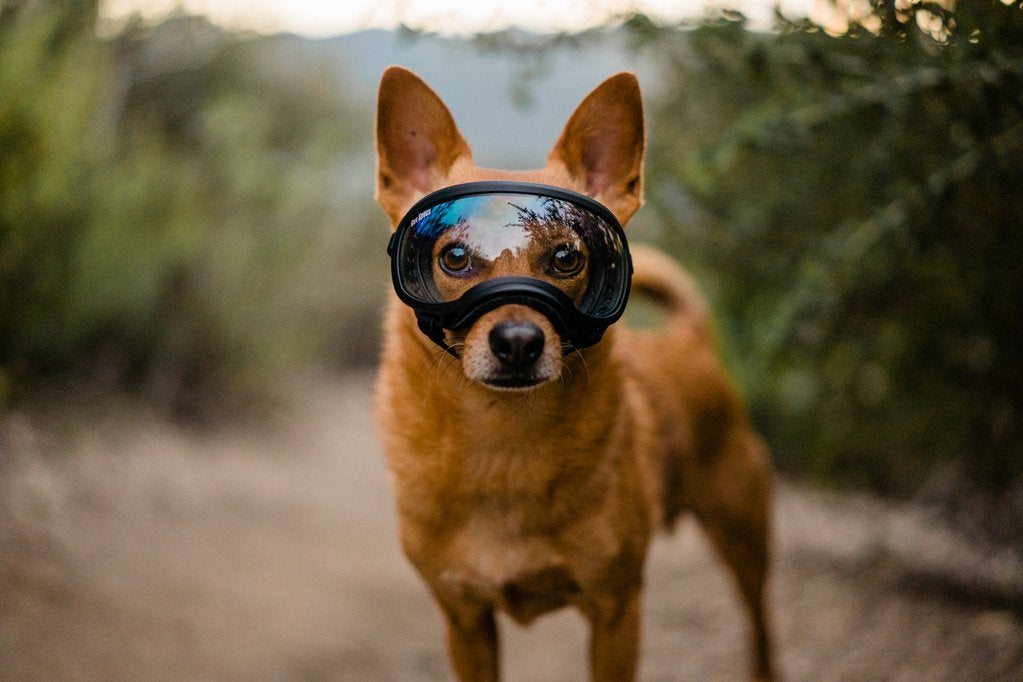Your dog looks at you longingly because he feels safe and comfortable in your presence. You feel the same gazing into his eyes. This exchange may happen several times a day.
But how often do you check her eyes for possible health issues?

Kristen Gervais, Veterinary Ophthalmologist, DVM, MS, DACVO, at VCA South Shore Animal Hospital in Weymouth, Massachusetts, weighed in on how to tell if your best friend might exhibit symptoms that mean she has a health condition affecting her eye(s).
Make Frequent Eye Contact
To best manage your dog’s eye health, pay close attention to her eyes so any problems can be identified in a timely manner, explained Dr. Gervais.
This is especially true for at-risk canines like older dogs and brachycephalic breeds. By conducting regular checks, you can identify any changes that may require a veterinarian’s advice, Dr. Gervais urges.
“Signs to watch for include squinting, cloudiness or redness of the eyes,” says Dr. Gervais. “For dogs with long hair around their eyes, it’s wise to keep this hair cut short so you can see the eyes better.”

5 REASONS YOUR DOG NEEDS EYE PROTECTION>>
Watch for These Indicators
A wide variety of conditions can affect a dog’s eyes, but the visible symptoms tend to be similar. Warning signs of an ophthalmic problem include squinting and discomfort exhibited by rubbing at the eyes. Some types of eye pain (for example from high pressure) can cause lethargy and decreased appetite. Redness, tearing or excessive discharge, cloudiness or vision loss are also signs something is wrong.
Dr. Gervais tells us what some of these symptoms might indicate:
Is Your Dog Squinting a Lot?
A common cause of squinting in dogs is corneal ulceration. Those are abrasions on the cornea, which is the clear window at the surface of the eye. Corneal ulceration is widespread in older dogs and brachycephalic or flat-faced breeds. Squinting and eye discomfort should prompt a vet visit if severe of if it doesn’t resolve in 24-48 hours.
Is There Discharge in Your Dog's Eyes?
In middle-aged to older small breed dogs, discharge can mean dry eye (keratoconjunctivitis sicca or KCS). Decreased tear production causes inflammation of the surface of the eyes resulting in eye irritation, redness and often a thick yellow discharge. KCS is very treatable if addressed in a timely manner. To maintain healthy levels of tear production, lifelong application of eye drops is required.
Do Your Dogs Eyes Have a Cloudy Appearance?
With age, a dog’s eyes gradually develop a grayish haze or cloudiness. This is due to a normal change in the eye known as nuclear sclerosis. This occurs as the lens of the eye hardens. Nuclear sclerosis doesn’t impair a dog’s vision, except at very advanced ages like 14 or 15 years. The same type of age-related change occurs in humans and eventually causes us to need reading glasses. Nuclear sclerosis doesn’t affect the canine’s vision and no further treatment is needed.
Does Your Dog Have Unequal Pupil Sizes?
When your dog shows an abnormally small pupil, it can be from the pain of a corneal ulcer or an inflammation inside the eye. Unequal pupil size where the pupil is abnormally large can mean glaucoma or a detached retina. However, in older dogs, a normal aging process called iris atrophy can cause changes to the size of the pupils so that they are unequal.
Is Your Dog’s Third Eyelid Visible?
Elevation or increased visibility of a dog’s third eyelid (all dogs have this, but you don’t often see it) is usually due to pain or eye irritation. When a dog’s eye hurts, the eye tends to sink back into the eye socket. This allows the third eye to passively raise up over the eye. This may also happen as a dog falls asleep and the muscles around her eye relax, but then it’s not anything to worry about.

“Many eye conditions that cause pain will also cause sensitivity to light, so UV protection can help to improve comfort,” says Dr. Gervais. “Some less common eye diseases are worsened by UV light exposure (for example, pannus in the German Shepherd dog is an autoimmune inflammatory eye disease that is more common in areas of high altitude due to increased UV light exposure).”
COULD YOUR DOG HAVE PANNUS? READ MORE>>
Test Your Dog’s Vision
When your dog starts running into furniture, can’t find her water bowl and/or doesn’t want to go outside at night, she may be experiencing loss of eyesight. Dr. Gervais suggests setting up an obstacle course in both very dim/dark lighting and regular day lighting to see if the dog bumps into anything. The menace response can be used - wave a closed fist at the eye and if vision is present, the dog should blink the eye.
Another eye test you can do is to drop two or three cotton balls in front of your dog. If she sees them, she’ll have some sort of a reaction like barking or moving. If she doesn’t react, she may be losing her vision and you should see your vet for a specific diagnosis and to discuss your options.

It’s wise to check your dog’s eyes frequently for redness, cloudiness, squinting or anything out of the ordinary. An all-over health check once a week where you smell the dog’s breath, brush her teeth, clean out ears and look at the eyes lets you discover changes that might indicate a health issue, sickness or injury.

